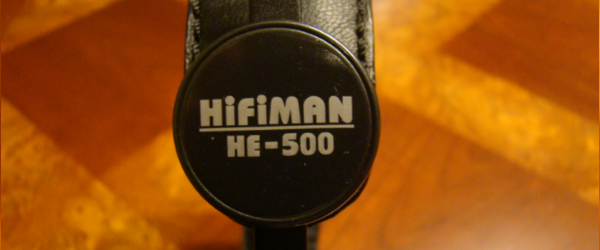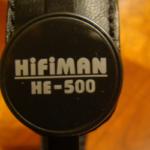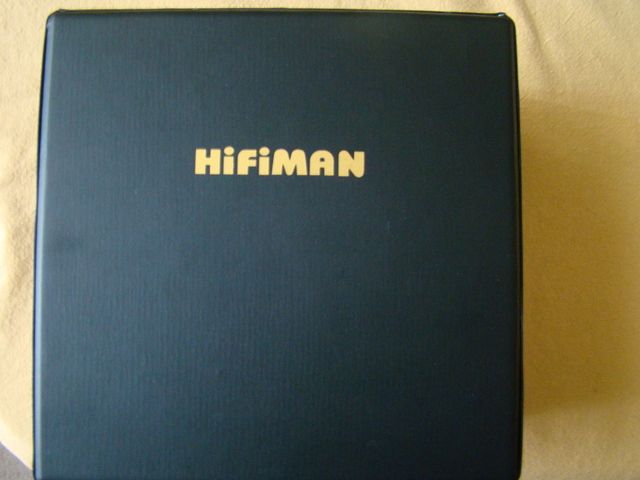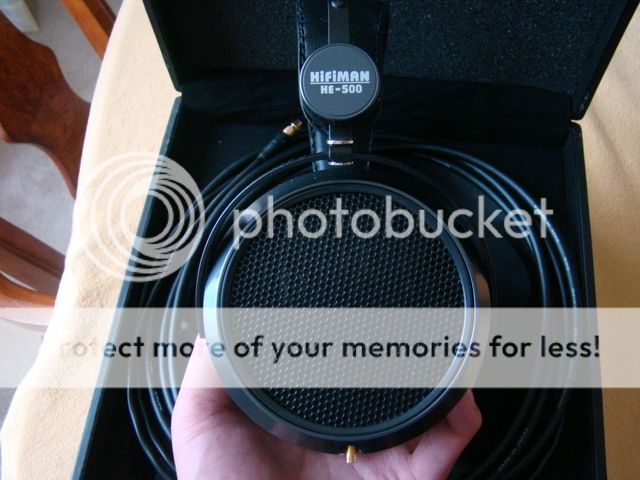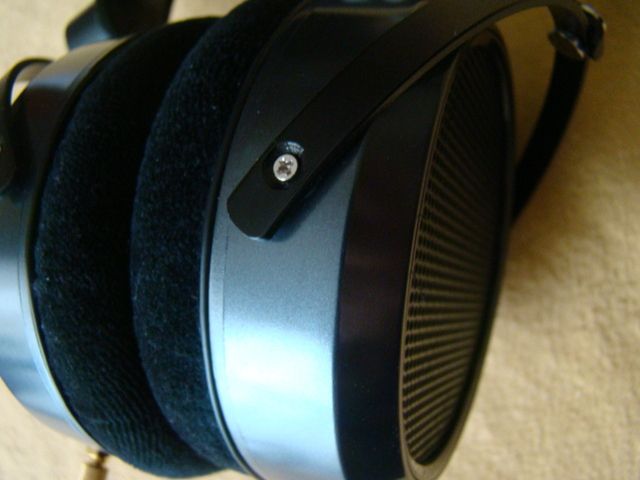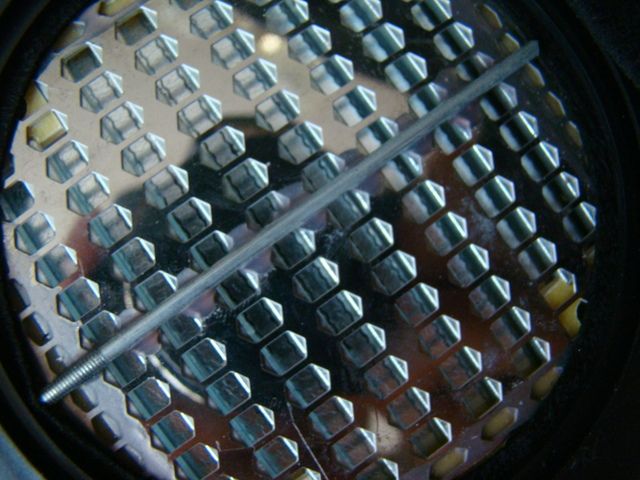The HIFIMAN HE-500 is a high-end open-back planar magnetic headphone and slightly easier to drive compared to the HE6. It is priced at $899.
Disclaimer: The Hifiman HE-500 is a sample in exchange for our honest opinion in this review. We thank the team at Hifiman for giving us this opportunity.
To read more about Hifiman products we reviewed on Headfonics click here.
This, my friends, is by far the best headphone I have ever heard. However, it’s also in the running for the headphone that I dislike the most. Why? Well, it’s simple when you think about it. This is a $900 headphone; one that isn’t mine at that.
Therefore, I don’t feel any buyer’s justification nor any particular company bias (even though I will admit that Fang makes some pretty cool stuff) so in my head, I’m constantly trying to figure out whether this would be a viable purchase should I have the money for this.
Do not, however, let this take away from the fact that the HE-500 is a fantastic headphone in its own right.
The packaging is downright classy. The HE-500 arrives in a pleather-coated latched box. When opened, the headphones in all their largeness is displayed right there, just for you, you lucky owner of what is one of the only relatively efficient pair of planar magnetic headphones (more on this later) in some stiff foam.
This ensures that “your precious” is unharmed in the perilous trip to your front lawn. Also inside is a single extra earpad—why there is only one, I shall never know—along with a cable and extra pair of connectors for you solder-savvy people out there.
Design
In the pictures, the HE-500 looks unassuming. Everyone knows that it’s made of plastic, an instant negative point in the eyes of those that say metal is the material for the extravagant, which this headphone truly is.
However, what pictures don’t show is that the plastic the HE-500 is made from really isn’t the type that should be scoffed at; it seems sturdy, it’s painted beautifully, and I really wouldn’t give a car about what the cups are made of if I was the reader.
The headband is padded with memory foam and lusciously supple leather. The connectors are a twist-to-lock affair, which is a system that’s not the easiest to secure. The pads that came with these are the old velour pads with the breakable tabs.
They’re pretty average pads actually. They actually don’t feel as nice as my AKG velours. I was going to talk about the thick Canare cable, but it seems that as of yesterday, the HE-500 now comes with a silver cable, not this cable.
Comfort
The one thing that most are probably wondering about is their heft. Well, these are easily the biggest headphones I have here, but surprisingly, they don’t feel like the heaviest.
No, that honor belongs to the Beyerdynamic DT48 with their completely aluminum build weighing in at 400g and actually starting to hurt my neck after an hour due to their weird weight distribution.
In contrast, the HE-500 are so freakin big that the weight doesn’t seem so significant. Sure, it’s heavy, but not painfully so. The clamp is something fierce, but the big fluffy velour pads make the clamp easily bearable.
I managed to wear the HE-500 for six hours straight for a few sessions. Sound leakage is another obvious issue. They leak pretty badly, but not as much as something like a Grado.
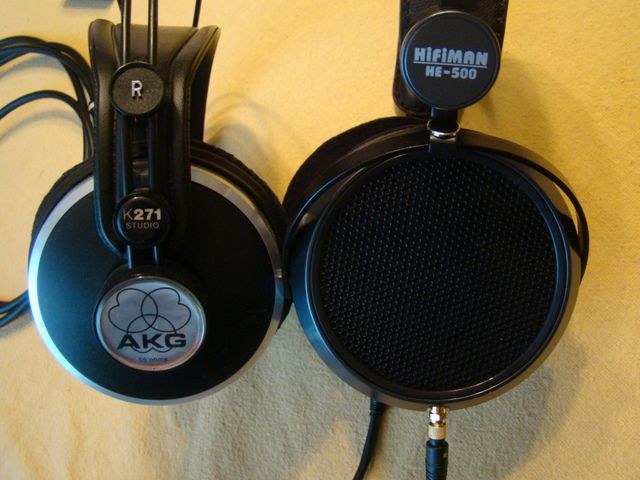
Planar magnetic drivers are my favorite type of headphone tech, mostly because they tend to have better treble than typical dynamic drivers, do not need a special amp unlike electrostats, and before Hifiman and Audez’e started making headphones, are wonderfully cheap, averaging under $100 for a capable planar.
I could explain how the drivers work, but Tyll Hertsens, one of the people who sparked the “headphone era” explains it better in his own article.
This technology was pretty big in the ’70s-’80s with companies such as Yamaha, Fostex, Audio Technica, Aiwa, Akai, and some other companies that you didn’t know made headphones, but eventually, production of these was halted in all except Fostex’s product lines. Fostex still makes planars—the T20RP, T40RP, and T50RP and are the basis of some awesome mods.
Sound Impressions
The HE-500 was initially called the HE6p to say that these are meant to be a more sensitive version of the HE6, which was known to be silly power hungry—almost to the needs of the fabled AKG K1000.
The result is a headphone that a regular MP3 player can actually begin to drive. Granted, they don’t sound their best from a simple DAP, but nobody buys a $700 planar headphone for that use, right?
Summary
Enough about the unimportant stuff though. How do they sound? Well, put simply, they sound fantastic. I could easily leave it at that and just tell everyone to buy them, but that’s just no fun.
The setups used are the Burson HA160D to my computer or a Bang and Olufsen 2402 turntable with some cheap preamp and the HA160D as the amp.
Bass
Let’s start from the ground up. The lowest of the lows is surprisingly present and face-shakey. Listening to Echospace’s Liumin was simply a treat with the HE-500, something I certainly didn’t think I would say.
They went down to 20hz with great ease—who said open headphones can’t do bass? Going a bit up the frequency range, mid-bass was punchy, but to call it overbearing would be insane.
While they certainly know how to put out some bass, it could never be called the focus of the HE-500’s sound. The bass was mesmerizingly quick and detailed, tympanis were cavernous, synth bass was, well, infectiously conveyed in a way that makes them recommendable for electronic.
Mids
The midrange is the hallmark of most planars and the HE-500 certainly does not disappoint. I used to say that my Beyerdynamic DT48 has the best midrange I’d ever heard.
Well the HE-500 absolutely crushes it in terms of presentation. As much as I love the DT48, it’s just the slightest bit too colored to be the absolute reference for anybody. It’s tilted slightly too high for most instruments, but no slouch regardless.
However, the HE-500 sounds simply captivating. These should be the benchmark every headphone manufacturer making a product under $500 should live up to. Vocals are tear-jerking, guitars are frighteningly realistic, brass is mostly spot-on.
I say mostly because as with every other planar headphone I’ve heard, the upper midrange has a bit of an unnatural tinge to it, making upper brass and sopranos sound nasaly, but not obviously so.
Treble
Treble is forward, but not piercing. The forward treble seems to be the complaint of most, but it’s easily fixable with a soft amp, like the Burson HA160, or decreasing the treble by either software or mechanical-placing some craft felt in front of the driver lowers treble, but kills some of the midrange magic-means.
Treble has always been hard to gauge for me because there aren’t very many instruments I can test for treble other than the highest pipe organ notes and cymbals; the rest only get so high with harmonics.
Regardless, the HE-500’s treble can’t really be described as “smooth,” yet it’s never piercing. To my ears, it’s probably the ideal amount of treble. Now for the stuff within the high frequencies, detail is astounding. Microdetails I never heard before now became plainly obvious. In a song in A Fine Frenzy’s One Cell in the Sea, I can almost plainly hear something fall from a piano.
Soundstage, while not massive, is still of respectable size. Classical won’t be the most spacious thing in the world with the HE-500, but this is an inherent problem with these planars, sadly. Timbre is impressive, but not perfect.
To be overly anal, they made a Selmer Super Balance Action alto sax sound ever so slightly flat, which could be a problem from everything else, but I don’t want anybody expecting perfect timbre from this humble headphone.
Synergy
Electronica
For electronic music, I used Echospace’s Liumin, as stated above. This is a…frankly, I don’t even know. DeepChord (from which Echospace is derived) has been called dub techno, whatever that means.
But what I do know is that the HE-500 takes the bass this song has by the reins and commands it with a certain proficiency that made me smile throughout the entire album. It never loses control and is just roughly an hour of fun.
Vocals
Female Vocals were judged with Hayley Westenra’s Treasure. I just love her delicate, yet powerful voice. The HE-500 was made for her—she felt like she was right in front of me, singing Shenandoah, but sadly, she wasn’t. Probably a good thing though, because she probably wouldn’t find my fluffy pajama pants particularly sexy…
Instruments
I used a remastered Mahler LP I have for classical. The presentation was spot on, violins had a very lush, pleasing character, violas, well, were somehow respectable—just kidding, the violas were great, but nobody actually likes the violas, so they’re not important. ;)
Flutes were light and airy. Brass was on the bright side but still retained good character. I apologize for the lack of real input here, but I’m too busy replaying the album!
Jazz
Jazz was represented by Miles Davis’ Bitches Brew. Miles’ trumpet was mesmerizing. I don’t know of any other headphones I’d ever be able to afford that could playback this album much better than what the HE-500 did.
Again, I apologize for the lack of input, but I can’t seem to focus on what I’m typing up, and if I type after I listen to the album, I lose the magic that I’ve heard.
Acoustics
I used John Butler Trio’s Live at St. Gallen album for judging acoustic performance. I had to listen to it a second time around to even pay attention to what was going on. The emotion conveyed was just so incredible that it’s hard to listen to any of the songs analytically.
At this level, it’s not really a matter of if something sounds good or not—it always will sound good—it’s a matter of how much a song can move you and strike you at your core, and the HE-500 can do that without batting an eye, and more.
It’s more or less pointless to talk about how the HE-500 sounds with certain genres. It’s something you must experience for yourself to really “get it.” Words are too vague to describe what the HE-500 does to you.
Select Comparisons
Now the next question is, “How much better are these $700 headphones than my $70 headphones?” To test this, I tested my Audio Technica ATH-2 against the HE-500.
The ATH-2 cost me $20 a few months ago and rarely go over $70. In all fairness, after all the rather intense mods I did to them, they sound closer to something one would expect to cost $150, but these are the only commercial planars I have, so I have no other point of reference.
My other headphones are equally as rare, and comparing the HE-500 to a Portapro or K271, no matter how respectable the two more common headphones are, is rather absurd because of the completely different purposes of the two.
The HE-500s actually sound like a perfected ATH-2 in quite a few ways. The increases, however, aren’t as drastic as I’d hoped, but it’s an easily discernable difference indeed, coming from someone who doesn’t really moan about using 192kbps MP3 if I have to.
Percentages don’t do all too much, but the increase is about 30% all around with more realistic mids, bass weight, quality, and treble that isn’t as dismal as in the ATH-2.
Is the HE-500 “worth it” in every sense of the word? Well…no. That’s not the point though. While they’re not “worth it” in the strictest sense, to us OCD audio nerds, they can bring us to a new level of music appreciation.
Our Verdict
So in conclusion, what have we learned? Well, we’ve learned that Hifiman definitely knows how to make a good planar magnetic headphone.
We have also learned that Kyle wants one. And as I’ve stated, we’re talking about a top-tier headphone here. Anybody reading this knows that they’re great. When you’re paying over $500 for a headphone, by St. Loy they must be great! No, the question here is, “Will these ever make me cry?” And that, my friends, is what the HE-500 does best.
They’re not the last word in terms of bass, or treble, but the (low to upper mid) mids, gosh, the mids are what draw you in and keep you in a trance that you will downright refuse to escape from.
And that, my friends, is easily worth the $700 price of entry. (Yes, $700, not $900. Dr. Fang reduced the price of the HE-500 by $200 and added leather pads and a silver cable as of November 10, 2011.)
Sure, they aren’t worth $500 more than most $200 headphones, but it is with great sorrow that I must now send them off to the next person in line to experience the HE-500. I shall truly miss it unless I buy one for myself, which may be inevitable.
HIFIMAN HE-500 Specifications
- Frequency response 10Hz – 40kHz
- Impedance 38 Ω
- Sensitivity 89dB/1mW
- Weight 500 grams

